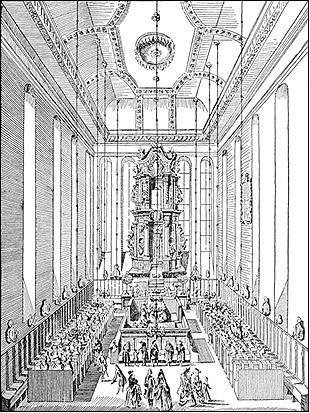
March 16, 1722
Berlin’s Jewish community was reorganized with a new constitution, the Aeltesten Reglement. This reorganization came after new statutes were issued by the German authorities regulating the organizational structure of the community. The new constitution, which was to be read annually in the synagogue, established a new communal hierarchy, which was led by two permanent Chief Elders. In addition to the Chief Elders, a Board – a communal committee of various sizes – was organized for handling important matters, such as caring for the poor, deciding who could or could not live in the community, and collecting taxes. Every three years, an election was held for the Board, except for the permanent Chief Elders.
The Aeltesten Reglement reinforced the notion of Jewish communal autonomy within the Prussian Kingdom and enjoyed the full support of the government, who insisted on collective responsibility of the Jewish population. The constitution also increased the power of the lay leadership within the Jewish community. The appointment of rabbis became the function of the Board, which also had the power to replace them from their positions. Some communities even passed regulations requiring the appointment of only rabbis from outside of the community, so as to be unbiased in their work.
The system of Jewish communal autonomy ended with Jewish emancipation and granting of civil rights in the late 19th Century. Jewish communal authority and self-governing institutions became part of Jewish life in the Diaspora, where self-help and communal insularity were developed. Separatism helped sustain Jewish identity among the vast numbers of disparate Jewish communities throughout Europe and the Middle East.
